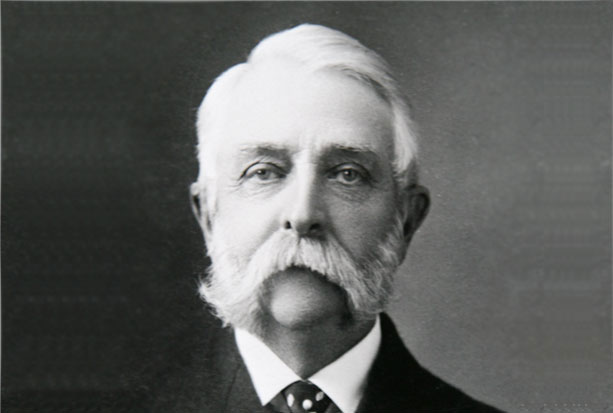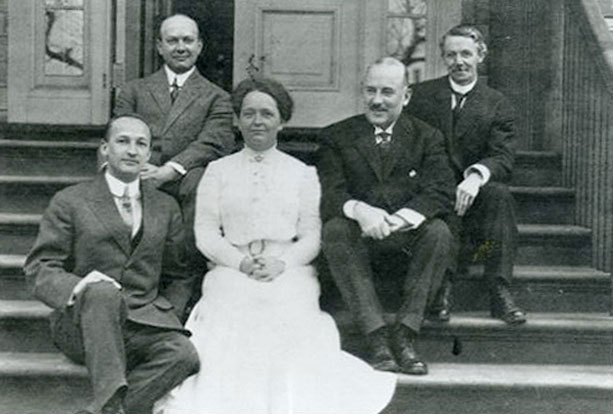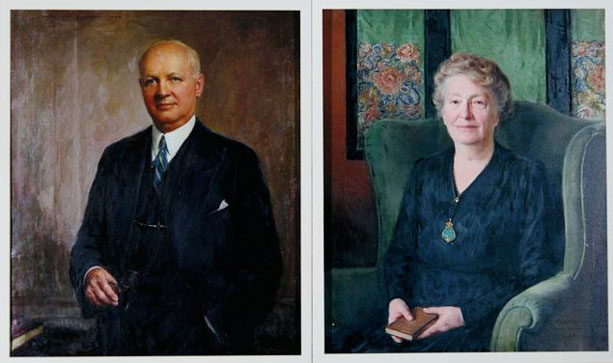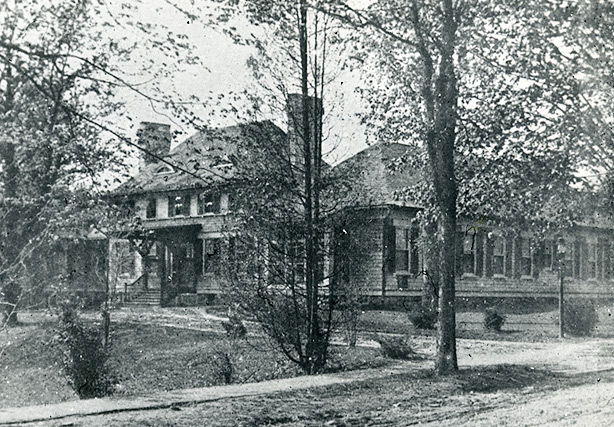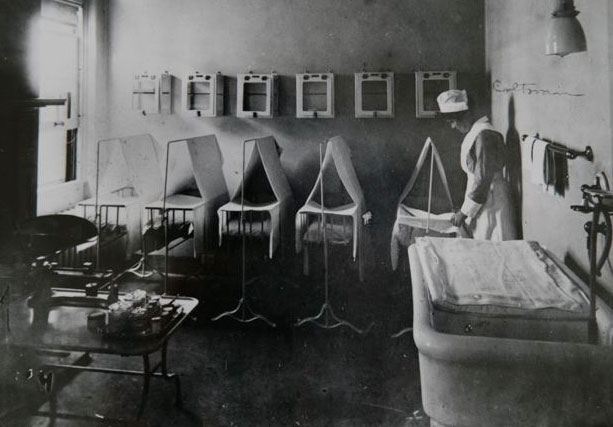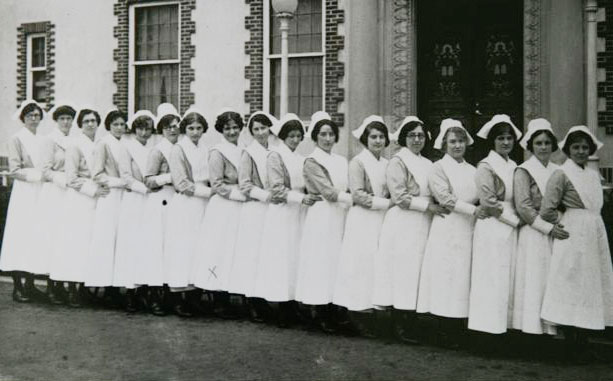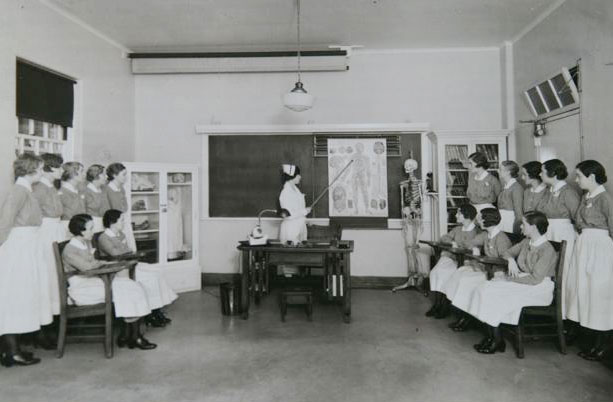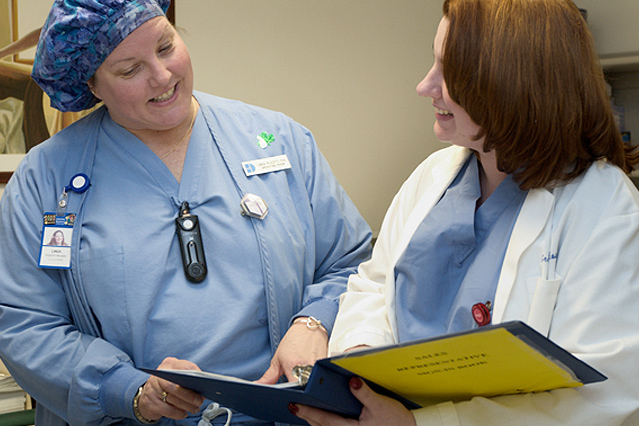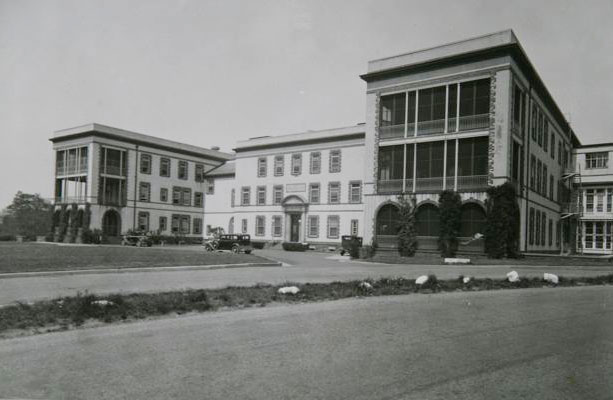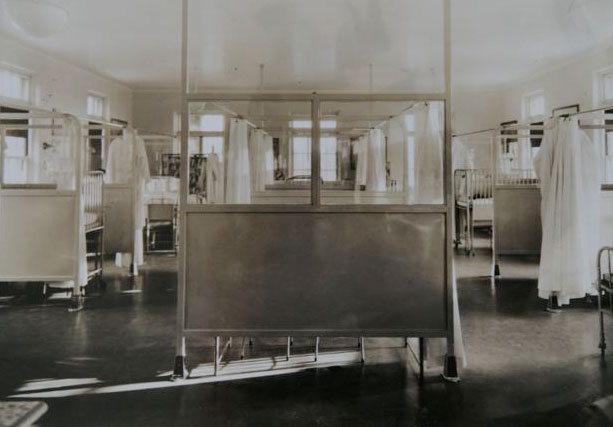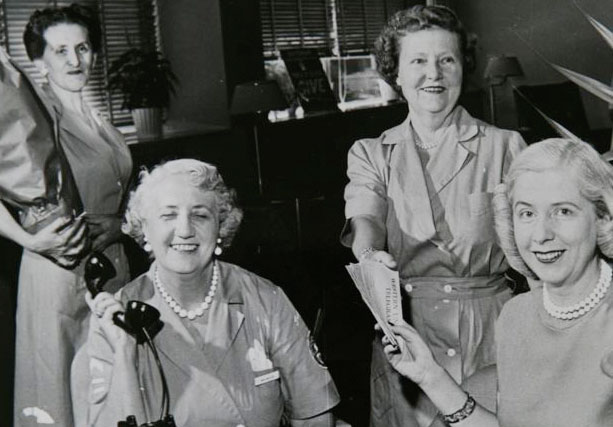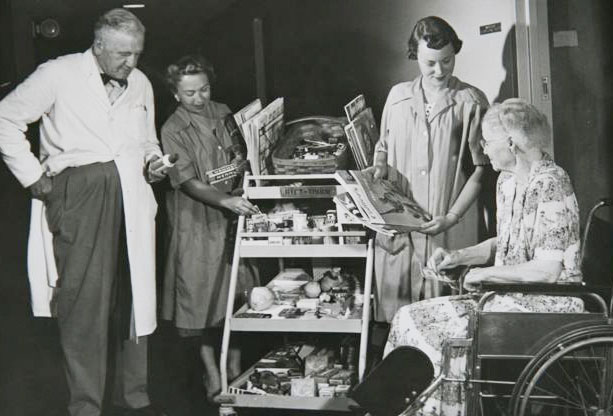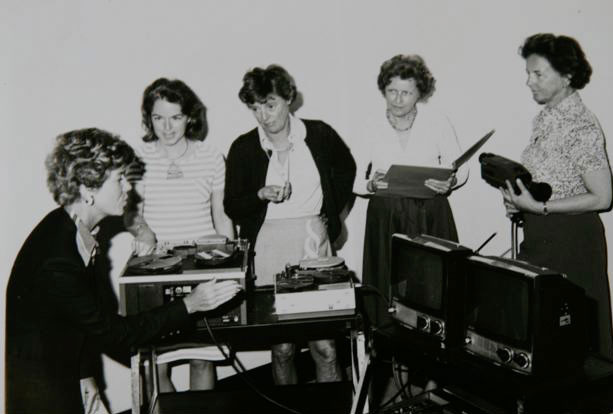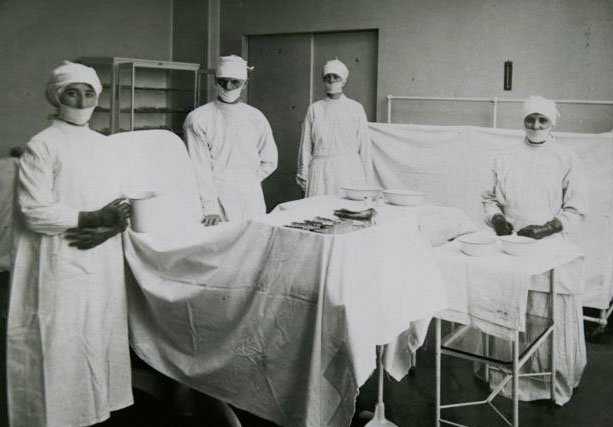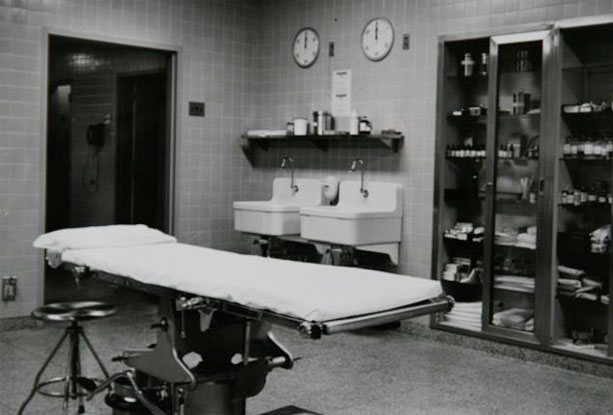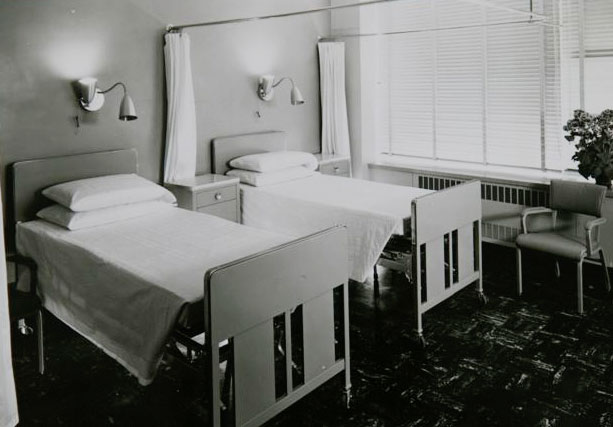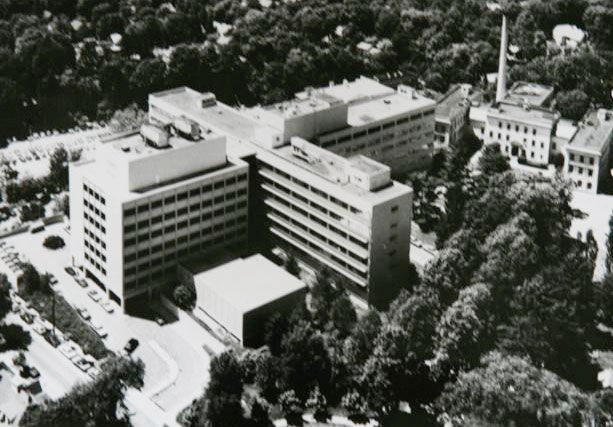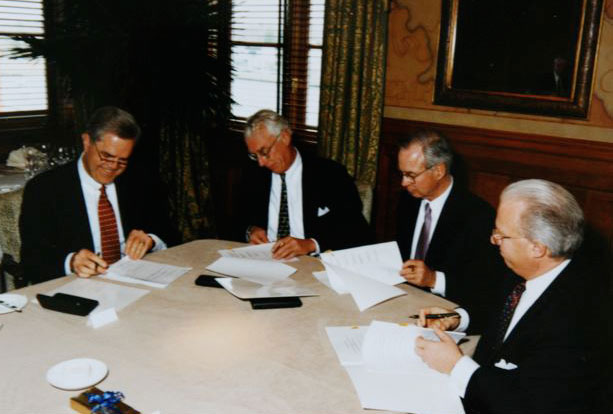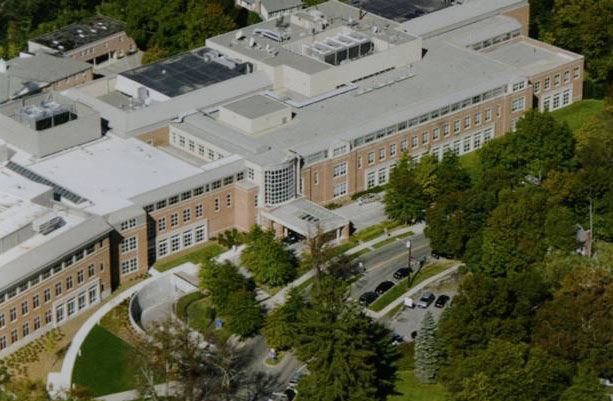| 1923 |
Greenwich Hospital’s laboratory is the first in Connecticut inspected by the State Department of Health’s Inspection and Approval Program. It passes unconditionally and remains to this day the oldest approved continuously-operated laboratory in the state. |
| 1952 |
Greenwich Hospital’s disaster preparedness plan is among the first developed by a hospital in Connecticut. |
| 1954 |
An arthritis clinic, the first in southeastern Connecticut, opens at Greenwich Hospital. The clinic is designed to help staff recognize the symptoms of arthritis in its early stages and to begin treatment. |
| 1964 |
One of the first successful prenatal transfusions to treat Rh incompatibility carried out anywhere in the world is performed at Greenwich Hospital. |
| 1967 |
Greenwich Hospital acquires a portable cardiac monitoring device that can be attached to a patient to provide continuous EKG readings of a patient’s heart over a span of several hours. It is one of only two such systems in the state. |
| 1977 |
The first Computed Tomography (CT) Scanner in Fairfield County is installed at Greenwich Hospital. The scanner performs swift cross-sectional diagnostic images and adds a vital new dimension to the diagnostic capability at the hospital. |
| 1981 |
Greenwich Hospital becomes one of the first in Connecticut to introduce the birthing room in response to prospective parents’ wishes for labor and delivery in a less clinical setting. This radical new feature is the vanguard of a new approach to maternity and childbirth and one of the most significant healthcare trends of the late 20th century. |
| 1983 |
Greenwich Hospital is the first community hospital in Connecticut to acquire a 9800 Computed Tomography Whole Body Scanner. The new scanner combines an advanced x-ray scanning system and microcomputer to pinpoint the precise locations of disease and abnormalities deep within the body. |
| 1984 |
Greenwich Hospital installs the state’s first Neodymium Yttrium-aluminum-garnet (YAG) laser. An alternative to major surgery, this laser is able to destroy polyps, seal bleeding vessels and remove obstructing tumors. |
| 1988 |
The New England Headache Treatment Program, one of only four such programs in the country, is established at Greenwich Hospital to provide comprehensive treatment and support for chronic and acute headaches sufferers. |
| 1990 |
Greenwich Hospital becomes the first hospital in Fairfield County to establish a “clean air” environment by going smoke free. |
|
A leader in the use of laser technology, Greenwich Hospital establishes The New England Laser Center and is the first hospital in Fairfield County to acquire a lithotripter laser for the fragmentation of kidney stones. |
|
The Connecticut Eye Bank is established at Greenwich Hospital as the only satellite in the state to complement the Eye Bank in New Britain Hospital. |
| 1991 |
Greenwich Hospital is first in the state and one of the first hospitals in the country to offer stereotaxic mammography, a state-of-the-art diagnostic procedure that permits doctors to perform non-surgical biopsies on breast masses. |
| 1992 |
Due to the requirements for new services and changing community needs, Greenwich Hospital launches a $60 million capital campaign for a new building. With the opening of the Leona and Harry B. Helmsley Medical building in 1999, and the Thomas and Olive C. Watson Pavilion in 2006, Greenwich Hospital enters a new era of caring and service. |
| 1996 |
Greenwich Hospital becomes the first hospital in Connecticut equipped with a Pinnacle 3-D treatment planning system, which transforms two-dimensional CAT scan X-rays of tumors into three-dimensional images thus allowing the delivery of radiation pinpointed to the exact area of malignancy. |
| 1997 |
Stereotactic radiosurgery, a procedure that may save lives and reduce side effects from treatment for brain cancer and that is available at only 200 hospitals worldwide, is added to cancer services at Greenwich Hospital. |
| 1998 |
To stay competitive in a changing healthcare market, Greenwich Hospital affiliates with the Yale New Haven Health System. Greenwich becomes a regional teaching hospital allied with the Yale University School of Medicine and representing all medical specialties. |
| 1999 |
Greenwich Hospital opens the first and only comprehensive adolescent medicine program in Fairfield County to meet the broad medical and mental needs of young people aged 12 to 22. A board certified adolescent specialist along with a professional team that includes a nutritionist, nurse practitioner, and psychologist provide a multi-disciplinary program for teenagers. |
| 2004 |
An Acute Care for the Elderly (ACE) Unit, the first in Fairfield County and one of only two in Connecticut to serve hospitalized patients meeting certain age criteria or having age-related medical issues, opens at Greenwich Hospital. |
| 2006 |
Greenwich Hospital is first hospital in Fairfield County to offer diagnostic imaging with a Lightspeed VCT (volume computed tomography) 64-slice scanner. With the ability to produce detailed images of the body in seconds, this scanner expands the non-invasive cardiovascular and neurological imaging services offered by the hospital. |
| 2007 |
Greenwich Hospital becomes one of the first hospitals in Connecticut to acquire the da Vinci surgical system. The system enables surgeons to use advanced robotic technology to perform minimally invasive surgery with nerve-sparing precision. |
|
The American Geriatrics Society’s first “Excellence in Geriatrics” award is given to Greenwich Hospital for its wide range of programs for older adults and their families. |
| 2008 |
Greenwich Hospital becomes the only medical facility in Connecticut and Westchester County to offer patients endobronchial ultrasound (EBUS), a less invasive procedure for the diagnosis and staging of lung cancer. |
| 2010 |
Greenwich Hospital’s Bendheim Cancer Center is given an Outstanding Achievement Award for excellence in patient care from the American College of Surgeon’s Commission on Cancer. The hospital is one of only three institutions in Connecticut to receive the award established to recognize programs that provide the best in cancer care. |
| 2011 |
The Spine Institute and The Center for Joint Replacement receive the Joint Commission’s “Gold Seal of Approval” for excellence in spinal fusion and total hip and knee replacement surgery. Greenwich Hospital is the first hospital in Connecticut and one of the first six in the nation to achieve certification. |
| 2012 |
Greenwich is the first hospital in the state to employ the ViOptix technology to measure local tissue oxygen saturation during and after surgery. Use of this system can reduce the risk of complications and further surgeries.
|
| 2013 |
The Greenwich Hospital Campus of Yale New Haven’s Smilow Cancer Hospital opens, heralding a new era in cancer care that expands treatment options for patients and strengthens collaboration among physicians allowing leading oncologists and specialists from Greenwich Hospital to work collaboratively with Yale Cancer Center specialists in the Bendheim Cancer Center’s advanced and newly renovated facilities. |
|
Greenwich becomes the only hospital in the New York City, Westchester, and Fairfield counties to offer Xofigo, commonly referred to as Radium 223, a new radiation oncology therapy for patients with stage 4 hormone-refractory prostate cancer (HRPC). |
| 2014 |
To improve the patient experience, Greenwich Hospital becomes the only hospital in the Northeast to offer "FamilyTouch," a communications service allowing ambulatory surgery patients to keep loved ones updated on their status via secure, one-way text messages from the patient healthcare team. |
| 2015 |
Greenwich is the first hospital in Connecticut to introduce "Kisses," a new security initiative in the Labor and Delivery Department that adds an extra layer of protection for new mothers and their babies. The Kisses band is a special sensor worn on the wrist of the new mother that works in tandem with the Hugs security band placed on her newborn's ankle and linked to the department's monitoring system. |
|
Greenwich becomes the first hospital in Connecticut to treat a patient with intraoperative radiation therapy (IORT) which delivers a concentrated dose of radiation to a tumor during surgery while sparing normal surrounding tissue. |

